Home » Firearms and Shooting » Shotguns » Difference Between the Original Fox A Grade and the Savage Fox A Grade
Difference Between the Original Fox A Grade and the Savage Fox A Grade

Gregg Elliott is the Shotgun Editor for Project Upland. He's…
Comparing the Mechanics, Manufacturing, and Value, of the Retired Savage Fox A Grade and the Original A.H. Fox A Grade
Grouse hunters are oddballs. I know, because I am one. While a lot of people think it’s strange to spend your free time walking through the woods with a dog, a gun, and no place to go, there’s nothing I’d rather do in October and November. The Savage Fox A Grade is also an oddball. Even though it says “Fox” all over it, this side-by-side shotgun has little in common with the original A.H. Fox shotgun. And that’s what I like most about it.
Listen to more articles on Apple | Google | Spotify | Audible
The Back Story of A.H. Fox and the Fox A Grade
What were you doing when you were 19 years old? In 1894, Ansley Herman Fox was already a renowned shooter, a businessman, and an inventor with a US patent. Over the next 12 years, he became a top live pigeon shooter, he launched three gunmaking enterprises, and he received six more US patents, including No. 801,862 in 1905, which created the new “A.H. Fox” shotgun. Ansley dubbed this new double “The Finest Gun in the World,” and a year later the first ones, available in 12-gauge and A, B, or C Grades, were being shipped around the country. But since dozens of shotgun models were already available to shooters, including those from well-known makers like L.C. Smith, Parker, and Ithaca, what would set the new A.H. Fox shotgun apart and attract buyers? Ansley was betting on his gun’s quality, simplicity, and grace.
Compared to the doubles on the market, the A.H. Fox used fewer parts and replaced things like a V-shaped mainspring with a more durable coil spring. These touches gave the A.H. Fox gun simple, reliable mechanics. They also made the action to be shallow and trim. This, along with touches to the stock and fore-end, gave the entire shotgun sweeping, elegant proportions that set it apart and made shooters notice it on the retailers’ shelves.
Even though the early years of his A.H. Fox were promising, Ansley left the company in 1914 to pursue automobile manufacturing—his generation’s tech boom. The A.H. Fox Gun Company continued on without him. In 1929, it was purchased by Savage Arms, and then in 1946, due to collapsing interest in side-by-sides, Savage stopped producing the A.H. Fox guns.
The year 1875 is significant to Fox shotguns in two ways: First, it’s the year Ansley Herman Fox was born. Second, it’s also the year two gunmakers created the Anson & Deeley shotgun action. Revolutionary in its day, the “A & D” action became one of the most popular shotgun designs ever created. Gunmakers around the world used it to build hundreds of thousands of side-by-sides. Today, you can find it in used shotguns that cost $1,000 and in new double rifles starting at $90,000. You can also find a version of it in the new Savage Fox A Grade.
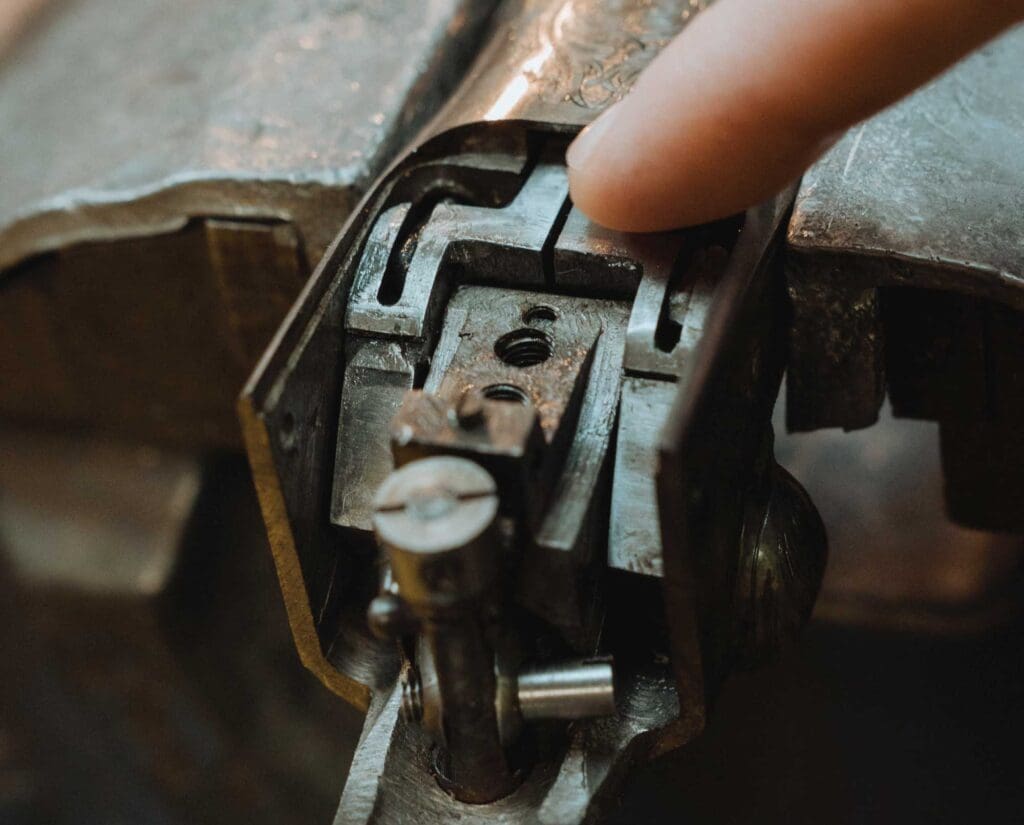
Connecticut Shotgun Manufacturing Company and the A.H. Fox
Most people don’t think of Connecticut as a “gun-friendly” state these days. But over the last two centuries, it has nurtured some of America’s most famous gunmakers, including Parker, Winchester, and Colt. But the A.H. Fox Gun Company never had anything to do with Connecticut—at least not until 1993. That’s the year the Connecticut Shotgun Manufacturing Company (CSMC) reintroduced the original A.H. Fox shotgun. These guns were true to Ansley’s design and built with modern materials and modern manufacturing techniques. They also had modern prices which ranged from $5,650 to $25,000. In the years that followed, those prices only went up, up, and up.
So in 2017, when Savage Arms wanted to add a side-by-side shotgun to the top of their shotgun lineup, the obvious choice—the CSMC A.H. Fox—was simply too expensive to consider. So, Savage picked a different side-by-side from the CSMC lineup—the RBL—and with a few tweaks, Savage created their new Fox A Grade.
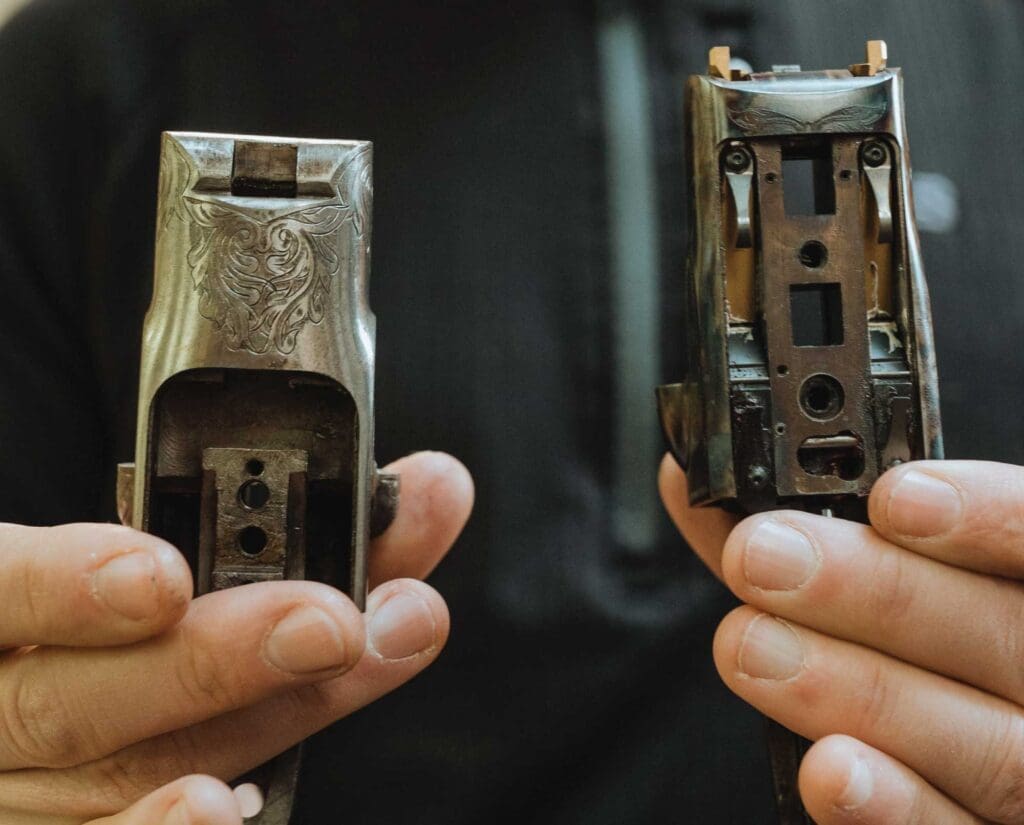
Breaking Down the A.H. Fox A Grade
Like the original Fox, the Savage Fox A Grade is 100-percent American made. It’s also made with some traditional methods like rust bluing and bone-and-charcoal, color-case hardening. But instead of using the crude manufacturing techniques available to gun companies a century ago, the new Fox A Grade is built with precision engineering equipment and CNC machines and then hand-finished inside and out. The action is machined from modern alloy steel, a metal more durable than anything ever available to the A.H. Fox Gun Company, and the gun uses a mix of high-tech coatings and finishes to help the gun withstand heavy shooting and to fend off rust and corrosion. The insides of the barrels are even treated to withstand everything from lead and steel shot, to the hardest of non-toxics. Touches like these, plus features like interchangeable, screw-in chokes, made the new Savage A Grade a great go-anywhere, do-anything double.
Because the Savage Fox is built on an Anson & Deeley action, it’s more complex than Mr. Fox’s gun. For example:
- On an A.H. Fox, the cocking arms, hammers, and firing pins are a single part, and the gun contains two of these parts—one per barrel. The Savage Fox uses cocking arms plus hammers with integrated firing pins—so two pieces per barrel, four parts in all, to perform the same functions.
- To secure the barrels to the action, the A.H. Fox uses a single-bite barrel extension with a rotary hook, both up by the toplever. The Savage Fox slides a bolt into the double bites cut into the barrel lumps.
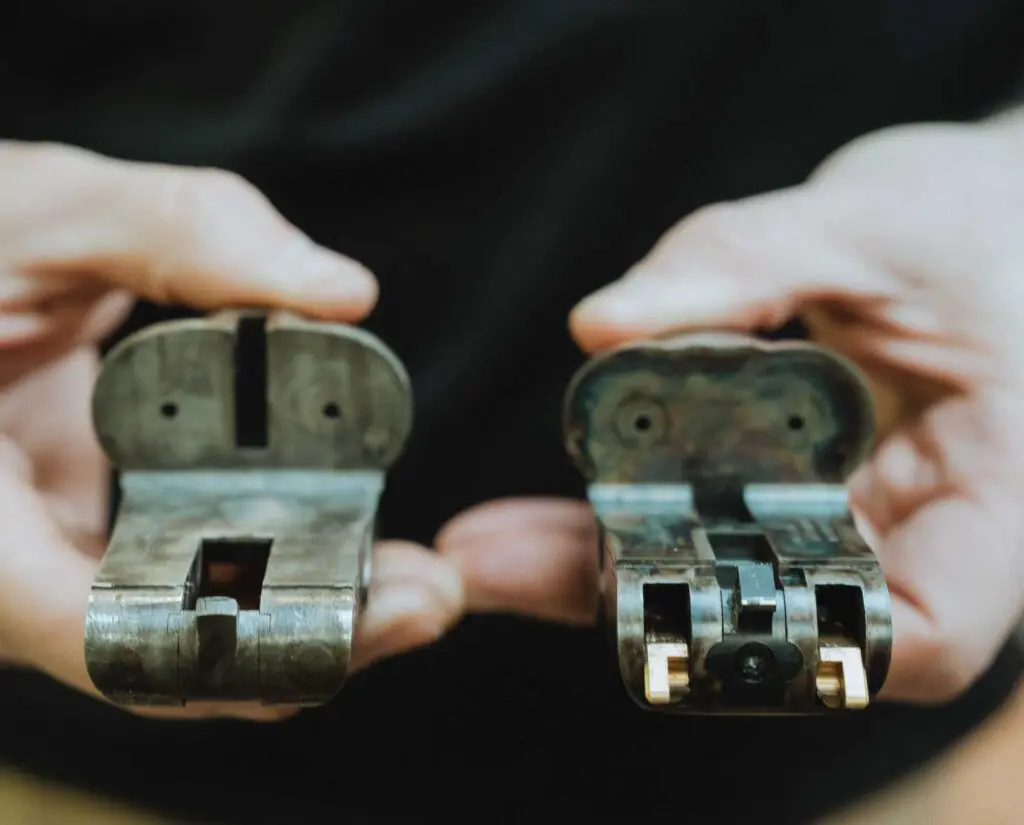
To make room for differences like these, the Savage Fox A Grade uses a bigger, blockier action. While this shotgun has been styled to look like an A.H. Fox, it’s not as sleek or trim as the original shotgun. And the 20-gauge Savage I reviewed weighed 6 pounds, 2 ounces—nice for a gun that gauge, but 5 ounces heavier than my original 16-gauge A.H. Fox. The Savage Fox also had a glossy application on the wood—Savage says the wood is black walnut, but it looked like claro walnut to me. Savage claims this is an oil finish, and maybe they’re right. But the traditional oil finish on my original Fox, and all A.H. Fox guns, is nicer. Other aspects of the Savage Fox Model A are also different, but these are good differences: Its double triggers are slim and elegant, and their pulls are crisp and not too heavy; the fore-end uses a reliable Anson pushrod; and the stock is fastened to the gun with a drawbolt, a simple way to keep it secured in place for decades to come.
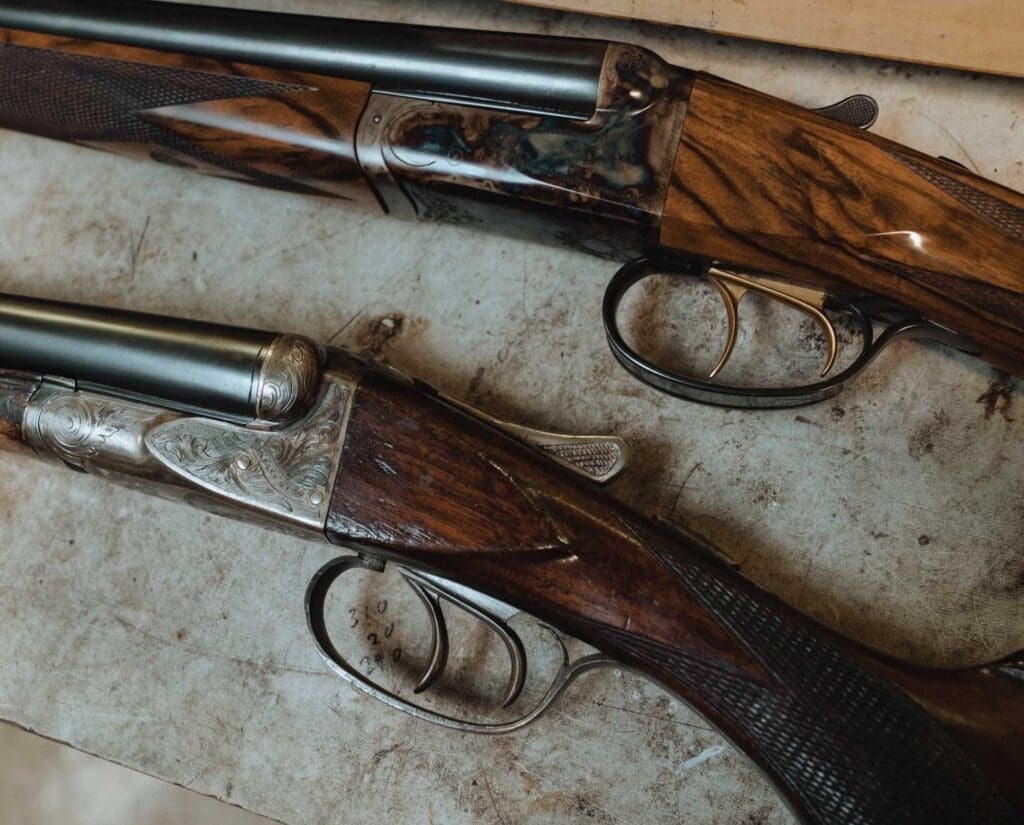
When you look at an old A.H. Fox, it’s easy to imagine it was built by men who used just their hands and hard work to create firearms of unparalleled quality. But, that’s not true. A hundred years ago, the A.H. Fox Gun Company used machines whenever it could. And while the original Fox shotguns have their merits—they were lightweight, had a dynamic feel, and were great looking—the design itself wasn’t perfect. Neither were the guns made on it.
I have several issues with old-school Fox shotguns. My biggest is with the single-bite barrel extension and the rotary hook used to secure the barrels to the action. On some guns, the hook grinds across the extension on opening, like a kennel door hung on a single hinge. And when a Fox is really worn, this setup can fail and allow the gun to pop open when fired.
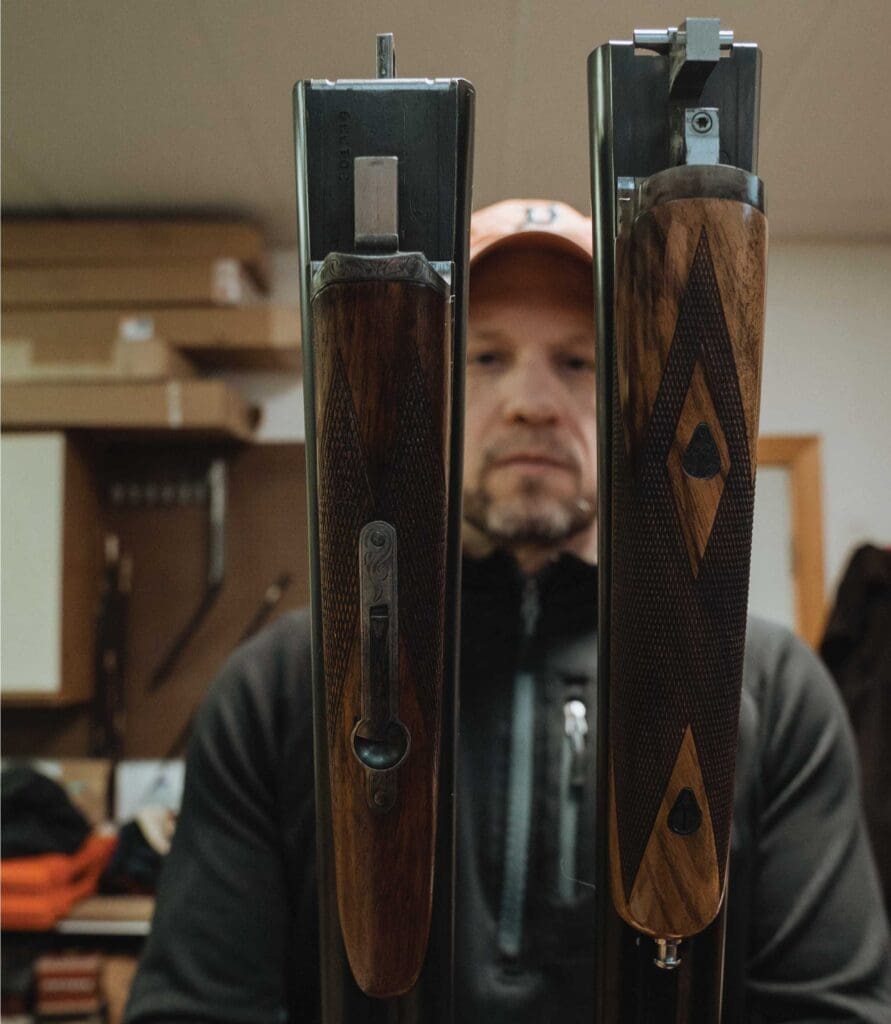
My next first complaint is how a Fox flops apart when you open it. To me, this feels cheap, and the force it puts on the hammers can crack the action. Other gripes are the mushy triggers and mediocre engraving a lot of Foxes have. Finally, I dislike how poorly many Foxes are filed, engraved, and finished. From the safety switches to the triggers, parts look crude and clunky, especially in the lower grades, and sloppy machining and filing marks are often visible on the barrels and action flats.
Of course, not every A.H. Fox has all these issues. But there is a problem every single one of these shotgun shares: their age. Every original Fox is old, some just over 70 years, while others more than a century or more. This means many were made with short chambers, and none were built for the high pressures and recoil generated by most modern ammunitions. Old age also means many true A.H. Fox shotguns have stock dimensions that don’t work for today’s shooters. And the longer a Fox has been around, the greater the chances exist that it has been beat up by years of rough use or messed with by a knucklehead gunsmith.
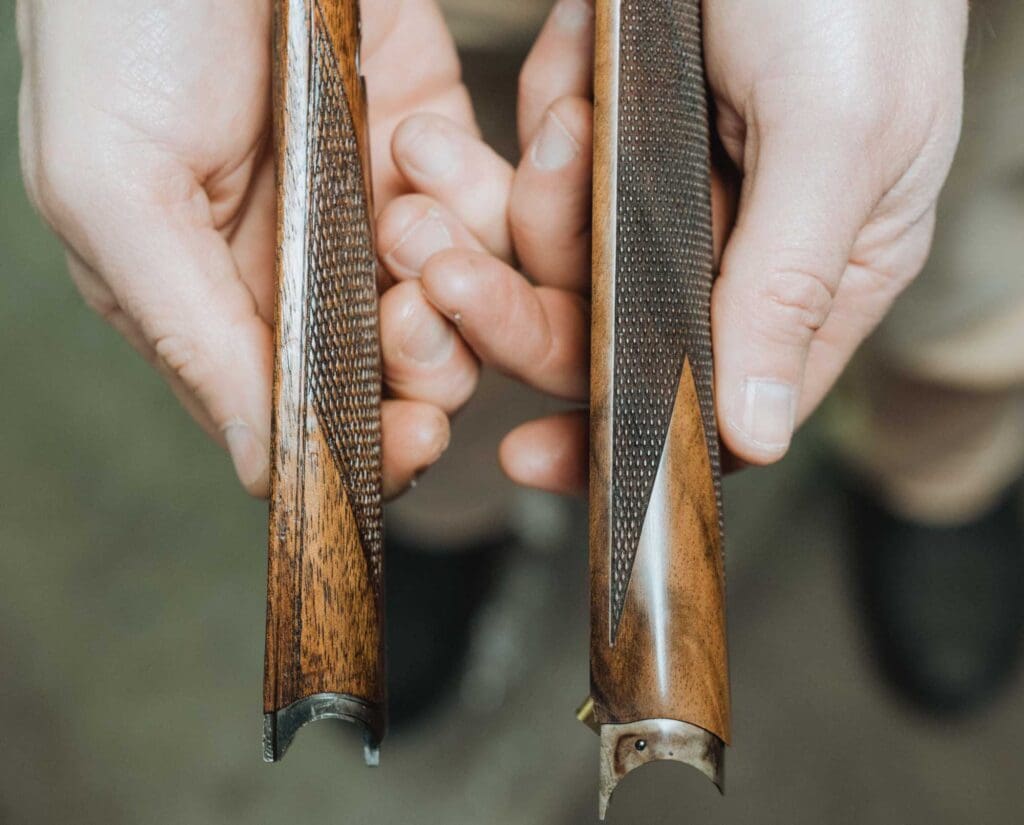
While I’m whining, let me throw in one of my biggest complaints about original Foxes: their cost. If you’re looking for a 16- or 20-gauge in any grade higher than a Sterlingworth, you’re going to write a big check—if you can find one at all. The
A.H. Fox Gun Company built just 3,521 16-gauges and 3,434 20-gauges. Who knows how many are still around and in good, original shape—maybe 50 in perfect condition? If you track a good one down, it’s going to be expensive. Today, a decent, original, 16-gauge A.H. Fox A Grade costs $3,500 or more. A good 20-gauge A.H. Fox A Grade starts at around $4,000. And when you consider how little quality this much money buys you, and compare that to the finer guns you can purchase for the same money, an original, smallbore A.H. Fox shotgun seem like very little bang for the buck.
Breaking Down the Savage Fox A Grade
Now let’s talk about how the new Savage Fox A Grade stacks up in comparison. Overall, the new Savage Fox A Grade is a better shotgun. Right out of the case, its straight-gripped stock and modern dimensions (14 1⁄2-inch length of pull and 1 1⁄2 inch drop at comb) fit me better than my old 16-gauge A.H. Fox A Grade ever will—unless I spend $4,000 to restock it. The quality of the new gun also stood out. All its components—from the toplever to the trigger—were nicely shaped. Nothing looked crude or rushed, and I didn’t see any file cuts or machining marks on the outside of the gun or on the barrels. As for feel, the Savage gun was nose-heavier than my old school model, and it weighed more overall, so it lacked the slithery, “alive” feel of a true smallbore Fox. But it was still quick to the shoulder and easy to shoot. Over my pointers, it came up fast, got on a flushing bird, and fired instinctively. And there was one aspect of the new Fox that was bested by my original model: its looks. The Savage Fox A Grade is a beefy gun, and it just doesn’t have the sexy, sleek look of the real thing.
- Original MSRP: $4,999 list, $4,499 retail
- Gauge: 12-gauge & 20-gauge
- Triggers: Double only
- Action: Anson & Deeley
- Ejectors: Yes, Holland & Holland style
- Barrel Lengths: 26-inch & 28-inch
- Stock: Straight grip, splinter fore-end only
- Stock dimensions: 4 1/2-inch LOP, 1 1/4-inch DAC, 2-inch DAH
- Chokes: IC, mod, full, screw-in
- Accessories: Nice plastic/polymer case, choke-tube wrench
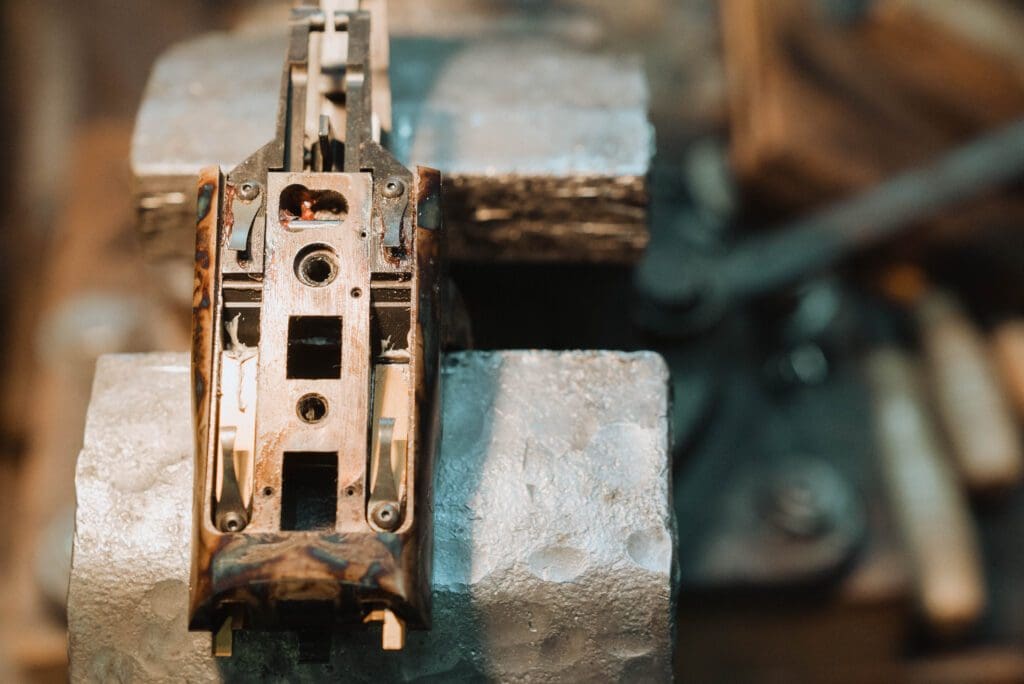
As I said in the beginning, grouse hunters are oddballs—those who are into old shotguns can be even more peculiar. A lot of us are solitary, sentimental types. For us, an original A.H. Fox shotgun is more than just parts and function, it’s history in our hands and our chance to join a legacy. President Theodore Roosevelt hunted with an A.H. Fox shotgun, and so did writers like Nash Buckingham. A.H. Fox shotguns were the kinds of guns that were around when Burton Spiller was hunting coverts across New Hampshire and Maine—he carried a Parker—and George Bird Evans was creating his Old Hemlock English setters. The Savage Fox A Grade offers a little of this, but not much. It’s more of a tribute to the original gun and to its era. So, while it’s a better gun, it may not be the better gun for you.
Gregg Elliott is the Shotgun Editor for Project Upland. He's been interested in shotguns and gundogs since he was a kid. Today, he blogs about both at www.DogsandDoubles.com and posts to Instagram @dogsanddoubles





Many thanks Gregg for your welcome revelation. My 90%+ Philadelphia Sterlingworth 16 gauge from 1928 and I will visit the trap and skeet range today. A case of RST 2-1/2” ammunition was delivered yesterday. It has been unavailable for well over a year. It’s my understanding that all Fox grades including Sterlingworth, share the same mechanism. Mine is truly elegant, original finished pistol grip stock, case hardened colors. Ideal carrying for quail in the Temblor Range, slightly lighter than my Lightning Feather 16 Browning.
Fair article at best…a lotta negative points with not much love for either gun..I do not Subscribe to Project Upland magazine because I just don’t like it like I do. Shooting Sportsman or Covey Rise…I wish I did but I just don’t,I guess it’s articles like this one that turn me off instead of make me feel the love and romance of bird hunting and guns that I get from other Wingshooting publications but not Yours… People have given me your magazine as a stocking stuffer at Christmas and I have bought a few singular copies at the bookstore…It just seems like something is missing and it doesn’t reach out to me as a fine bird hunters publication…..I hope it does for others and I’m sure there are folks totally pleased….God bless them for feeling that way way, most sincerely and respectfully,..Martin Angers
I agree